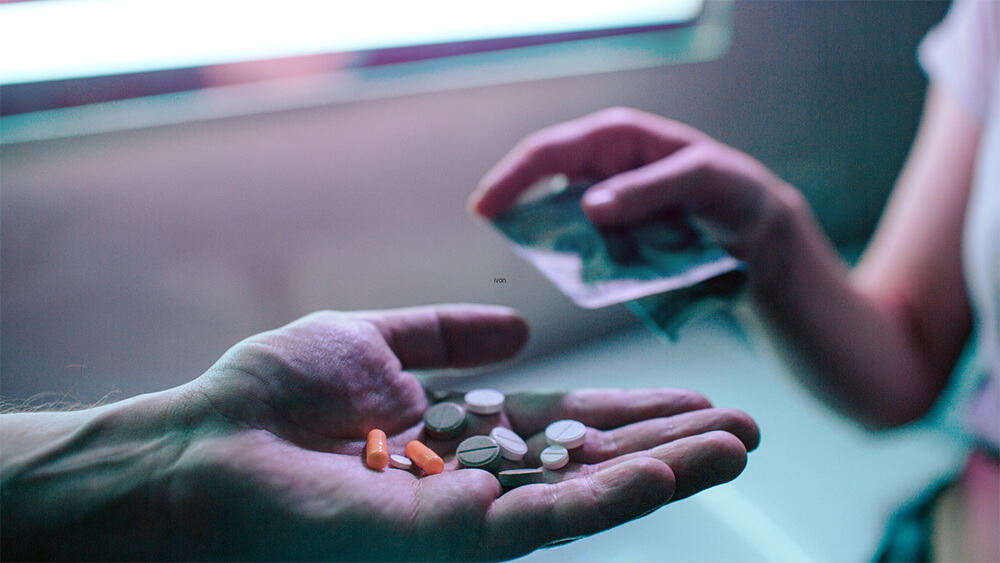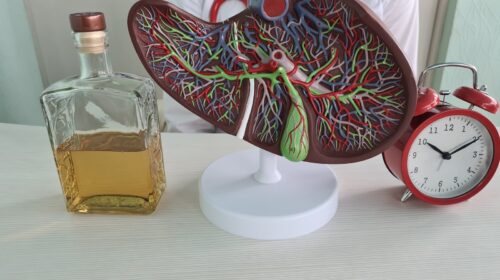Depending on a number of factors, (ingestion method, genetics, frequency, dosage, etc.) Ativan® can stay in your system anywhere from 24 to 72 hours and has an estimated half-life of 12 to 18 hours.

A significant number of people worldwide are grappling with anxiety – a disorder that can have severe impacts on daily life. It can cause chronic stress, lower quality of life, and intense panic attacks, which make everyday tasks seem too hard to complete. Thankfully, those diagnosed with anxiety may find relief in prescription medication like Ativan®.
Lorazepam[1], or Ativan®, is a benzodiazepine medication that targets neurotransmitters within the brain to promote tranquility and relaxation. Although it can be a successful remedy for anxiety and related health issues, it is essential to be aware of various factors linked with its usage, including its duration in your system. This knowledge will guarantee its safe use and guide decisions concerning where and when it’s appropriate to take it.
What is Ativan®?
Ativan®, otherwise called lorazepam in chemical terms, is a therapeutic medication categorized under the benzodiazepine family of drugs.
Benzodiazepines[2] remain a frequently administered prescription remedy for their hypnotic, sedative, and anxiolytic characteristics, positioning them as a practical solution for various medical disorders. Ativan® is applied foremost in managing anxiety disorders and as an intervention for insomnia, seizures, and muscle relaxation.
The therapeutic effects of Ativan® stem from its ability to enhance the activity of gamma-aminobutyric acid (GABA)[3], a prominent inhibitory neurotransmitter in the brain. GABA helps regulate neuronal excitability, and by increasing the effectiveness of GABA, Ativan® effectively reduces excessive nerve activity.
This leads to calming effects that help alleviate anxiety, promote sleep, and control seizures. As with any medication, it’s essential to consult with a healthcare professional before starting or stopping Ativan® to ensure proper use and avoid potential complications.
How Ativan® is Metabolized?
Ativan® enters the bloodstream upon oral administration and is subsequently sent to the liver for metabolization. Glucuronidation is when Ativan® is broken down in the liver by attaching a glucuronic acid molecule to the drug. This process transforms Ativan® into an inactive metabolite called lorazepam-glucuronide.
The body expels this metabolite through urine, successfully eliminating Ativan® from the system. The liver, therefore, plays an indispensable role in facilitating the conversion of Ativan® into an inactive form as part of the elimination process.
The liver’s efficiency in metabolizing Ativan® can significantly impact how long the drug remains in your system. Certain factors, such as liver disease or impaired liver function, can slow metabolism, causing Ativan® to stay in the body for extended periods.
The term “half-life” in pharmacology defines the interval in which the concentration of a drug in the bloodstream decreases by exactly 50%. Ativan® has an estimated half-life of 12 to 18 hours, implying that half of the consumed dose is cleared from the body within this duration.
Nonetheless, multiple personal factors such as age, weight, and metabolism can trigger differences in the half-life, leading to varying outcomes among individuals.
Factors Affecting How Long Ativan® Stays in Your System
Several factors can influence the duration Ativan® remains in your system. Understanding these factors can help you better manage your medication and ensure its safe and effective use.
Dosage
The relationship between the amounts of Ativan® consumed and how long it stays within one’s bloodstream is pretty straightforward. As dosages exceed their usual standards, they naturally require more processing periods before being eliminated by our bodies – generally needing twice as much time to be cleared.
Depending on the amount of Ativan® taken, it can stay on average in your blood for 3 days after consumption.
Frequency of Use
Frequent use of Ativan® can lead to accumulation in the body, as the drug may not have enough time to be fully metabolized and eliminated between doses. This build-up can prolong the time it takes for Ativan® to be cleared from your system. With consistent use, Ativan® may accumulate in fatty tissues, further extending the time for the drug to be eliminated.
Individual Factors
Older adults who consume Ativan® tend to face slower metabolism due to specific aging-related physiological processes that impact liver function. As an outcome, researchers suggest that this medication stays within their bodies longer than fast-metabolizing individuals’ systems. Those with higher body fat may retain the drug longer, as Ativan® is lipophilic and can accumulate in fatty tissues.
Since the liver plays a crucial role in metabolizing Ativan®, impaired liver function can slow the elimination process. Similarly, kidney function can impact the excretion of the drug’s metabolites, affecting the clearance time.
Genetic factors can influence how efficiently an individual’s body processes Ativan®. Certain genetic variations may lead to a slower or faster metabolism, impacting the drug’s duration in the system.
Drug Interactions
Some medications can interact with Ativan® by competing for the same enzymes responsible for metabolizing the drug or inhibiting these enzymes. Certain medications influence how efficiently Ativan® is metabolized within our bodies.
For instance, cimetidine, omeprazole, or erythromycin are known drugs that suppress liver enzymes necessary for processing Ativan®. These inhibitors can potentially prolong the drug’s presence in your system. Discussing any concurrent medications with your healthcare provider to avoid potential interactions and ensure safe use is essential.
Ativan® Detection Methods and Timeframes
While understanding how long Ativan® stays in your system is crucial for its safe use, it’s also essential to know the various methods used to detect the drug and their respective timeframes. This information can be relevant for employment or medical screenings, as well as personal knowledge.
Blood Test
Blood tests can detect Ativan® up to 3 days post-consumption. They monitor lorazepam, the active component in Ativan®, in a blood sample to determine its presence. Although blood tests are highly accurate, their small detection window makes them unsuitable for identifying previous usage patterns.
Urine Test
The detectability of Ativan® in urine tests is limited to a window of 1-6 days after the last dosage. This detectability is influenced by the frequency and dosage of use and individual metabolism.
Due to its more extended detection period and simple sample collection, urine tests are frequently used for drug screenings. These tests can detect lorazepam-glucuronide, the primary metabolite of Ativan®, in urine specimens.
Saliva Test
Saliva testing is capable of detecting Ativan® for a period of up to eight hours after the last dose. This testing method involves taking an oral fluid sample using a swab and then analyzing it for the existence of lorazepam.
It is highly precise, akin to blood tests, but its detection window is comparatively shorter, making it less appropriate for detecting prior consumption.
Hair Test
Hair analysis has been demonstrated to provide insights on Ativan® usage as far back as 1-3 months after initial intake. A scalp hair sample is a typical choice for this form of hair testing. This method has the lengthiest identifiable detection window for identifying drug use.
Hair testing, on the other hand, may not be the most successful method when identifying single or non-chronic usage of Ativan® because of the decreased dosage in hair samples.
Every detection method has distinct advantages and drawbacks, and the appropriate methodology is contingent on the particular requisites of the testing scenario. It should be noted that the detection windows are roughly estimated and may deviate based on the person in question.

























